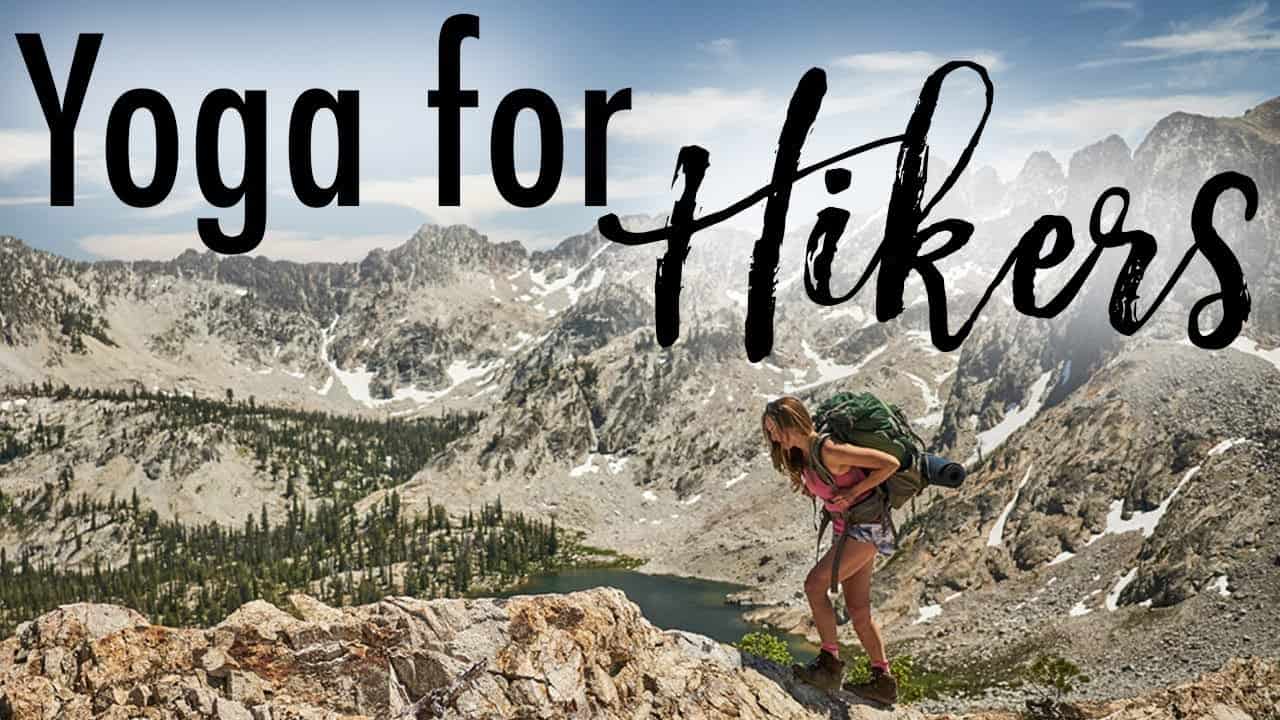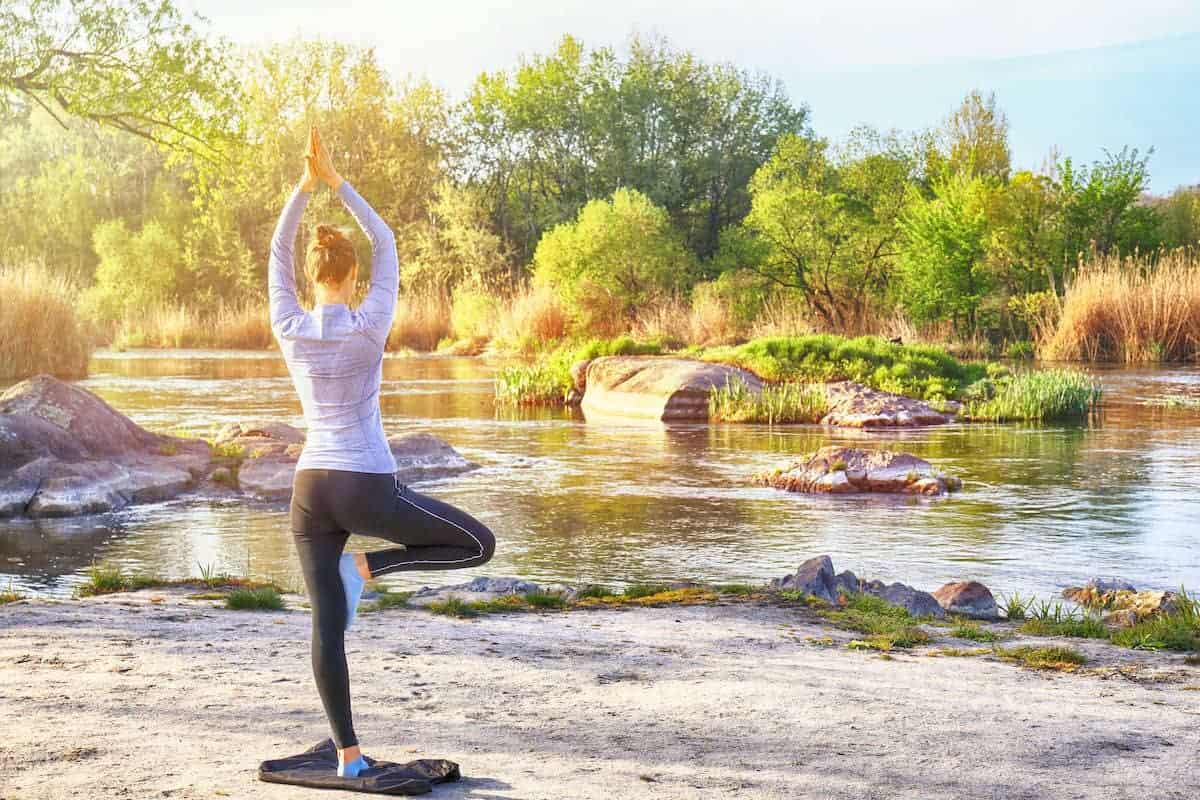Yoga for hikers focuses on building strength in the legs and core, improving hip and ankle flexibility, enhancing balance, and developing mindful breathing for increased endurance and recovery.
Hit the Trails with Confidence: How Yoga Can Strengthen Your Legs, Ankles, and Core Stability for Hiking
Yoga and hiking are two activities that can greatly complement each other. While hiking provides an opportunity to connect with nature and challenge oneself physically, yoga offers a way to improve strength, flexibility, and mental focus. By incorporating yoga into your hiking routine, you can enhance your performance on the trails and reduce the risk of injuries.
One of the key benefits of practicing yoga for hikers is the improvement in strength and flexibility. Hiking requires strong legs to tackle steep inclines and uneven terrain.
Yoga poses that target the leg muscles can help build strength in the quadriceps, hamstrings, and calves, making it easier to navigate challenging trails. Additionally, yoga helps improve flexibility, which is essential for preventing muscle strains and maintaining a full range of motion while hiking.
Understanding the Importance of Strong Legs for Hiking
Strong legs are crucial for hiking as they provide the power and stability needed to tackle various terrains. When hiking uphill, the leg muscles work hard to propel the body forward against gravity. The quadriceps, located in the front of the thighs, are particularly important for generating power during uphill climbs. Strong quadriceps help maintain a steady pace and reduce fatigue.
The hamstrings, located at the back of the thighs, also play a significant role in hiking. These muscles help control the descent on steep slopes and provide stability during downhill sections. Weak hamstrings can lead to knee pain and instability while hiking.
The calf muscles, including the gastrocnemius and soleus, are responsible for pushing off the ground during each step. These muscles are especially important when hiking on uneven terrain or when navigating rocky trails. Strong calves help absorb shock and provide balance.
How Yoga Can Help Strengthen Your Legs for Hiking
Yoga is an excellent way to strengthen leg muscles for hiking. Many yoga poses target the quadriceps, hamstrings, and calves, helping to build strength and endurance. One such pose is the Warrior series, which includes Warrior I, Warrior II, and Warrior III.
These poses engage the quadriceps, hamstrings, and calves, while also improving balance and stability.
Another beneficial yoga pose for strengthening the legs is Chair Pose. This pose targets the quadriceps and glutes, helping to build strength in these muscles. Chair Pose also improves balance and stability, which are essential for navigating uneven terrain while hiking.
Additionally, poses such as Downward Facing Dog and Standing Forward Fold stretch the hamstrings and calves, improving flexibility and reducing the risk of strains or injuries while hiking.
The Role of Ankles in Hiking and How Yoga Can Improve Stability
Ankle stability is crucial for hiking as it helps prevent sprains and provides a solid foundation for each step. When hiking on uneven terrain or crossing streams, strong ankles are essential for maintaining balance and preventing injuries.
Yoga can help improve ankle stability through various poses that target the muscles surrounding the ankles. One such pose is Tree Pose, which requires balancing on one leg while keeping the foot firmly rooted to the ground. This pose strengthens the muscles in the feet and ankles, improving stability and proprioception.
Warrior III is another pose that helps improve ankle stability. This pose requires balancing on one leg while extending the other leg behind you. By practicing this pose regularly, you can strengthen the muscles in your ankles and improve your ability to maintain balance on uneven surfaces.
Strengthening Your Core with Yoga for Better Balance on the Trails
A strong core is essential for maintaining balance and stability while hiking. The core muscles, including the abdominals, obliques, and lower back muscles, provide support to the spine and help transfer power from the lower body to the upper body.
Yoga can help strengthen core muscles through various poses that engage these muscles. Plank Pose is an excellent pose for targeting the core. This pose requires holding a push-up position, engaging the abdominals and lower back muscles. By practicing Plank Pose regularly, you can build strength in your core and improve your ability to maintain balance on the trails.
Boat Pose is another beneficial yoga pose for strengthening the core. This pose involves balancing on the sit bones while lifting the legs and torso off the ground. Boat Pose engages the abdominals and hip flexors, helping to build strength and stability in the core.
The Connection Between Breathing and Hiking: How Yoga Can Help
Proper breathing is essential for hiking as it helps supply oxygen to the muscles and improves endurance. When hiking at higher altitudes or on challenging trails, it’s important to have control over your breath to prevent fatigue and maintain a steady pace.
Yoga can help improve breathing techniques through pranayama, or breath control exercises. One such exercise is Deep Belly Breathing, which involves inhaling deeply through the nose, allowing the belly to expand, and exhaling fully through the nose, drawing the belly in towards the spine. Deep Belly Breathing helps increase lung capacity and improves oxygen intake.
Another beneficial breathing technique for hikers is Alternate Nostril Breathing. This technique involves closing one nostril with the thumb and inhaling deeply through the other nostril, then closing that nostril with the ring finger and exhaling through the opposite nostril. Alternate Nostril Breathing helps balance the flow of energy in the body and promotes mental clarity.
Yoga Poses for Leg and Ankle Strength for Hiking
1. Warrior I: Stand with your feet hip-width apart. Step your left foot back about 3-4 feet, turning it slightly outwards. Bend your right knee, keeping it directly over your ankle. Raise your arms overhead, reaching towards the ceiling. Hold this pose for 5-10 breaths, then switch sides.
2. Chair Pose: Stand with your feet together. Bend your knees and lower your hips as if you were sitting back into a chair. Extend your arms forward, parallel to the ground. Hold this pose for 5-10 breaths.
3. Downward Facing Dog: Start on your hands and knees. Press into your hands and lift your hips up towards the ceiling, forming an inverted V shape with your body. Press your heels towards the ground and lengthen through your spine. Hold this pose for 5-10 breaths.
4. Tree Pose: Stand with your feet together. Shift your weight onto your left foot and lift your right foot off the ground. Place the sole of your right foot against the inner left thigh or calf, avoiding the knee joint. Bring your hands to prayer position at your heart or extend them overhead. Hold this pose for 5-10 breaths, then switch sides.
Yoga Poses for Core Stability for Hiking
1. Plank Pose: Start in a push-up position with your hands directly under your shoulders and your legs extended behind you. Engage your core and hold this position for 30 seconds to 1 minute.
2. Boat Pose: Sit on the ground with your knees bent and feet flat on the floor. Lean back slightly and lift your feet off the ground, balancing on your sit bones. Extend your arms forward, parallel to the ground. Hold this pose for 30 seconds to 1 minute.
3. Side Plank: Start in a plank position, then shift your weight onto your right hand and outer edge of the right foot, stacking the left foot on top of the right foot. Extend your left arm towards the ceiling, creating a straight line from head to toe. Hold this pose for 30 seconds to 1 minute, then switch sides.
Tips for Incorporating Yoga into Your Hiking Routine
To incorporate yoga into your hiking routine, consider the following tips:
1. Start with shorter yoga sessions: If you’re new to yoga, start with shorter sessions and gradually increase the duration as you build strength and flexibility.
2. Choose yoga poses that target specific muscles: Focus on poses that target the leg muscles, ankles, and core to improve strength and stability for hiking.
3. Practice yoga before and after hiking: Warm up with a short yoga session before hitting the trails to prepare your body for the physical demands of hiking. After your hike, cool down with a gentle yoga sequence to stretch and relax your muscles.
4. Find a balance between strength and flexibility: While it’s important to build strength in your legs and core, don’t neglect flexibility. Incorporate stretching poses into your yoga routine to maintain a full range of motion while hiking.
5. Listen to your body: Pay attention to how your body feels during and after yoga sessions. If you experience any pain or discomfort, modify or skip poses that aggravate your symptoms.
Other Benefits of Yoga for Hikers
In addition to strengthening leg muscles, improving ankle stability, and enhancing core strength, practicing yoga offers numerous other benefits for hikers. Regular yoga practice can help improve balance, coordination, and proprioception, making it easier to navigate challenging trails. Yoga also promotes mental focus and mindfulness, allowing hikers to fully immerse themselves in the present moment and enjoy the beauty of nature.
Furthermore, yoga can help prevent injuries by improving flexibility and reducing muscle imbalances. By stretching tight muscles and strengthening weak ones, hikers can reduce the risk of strains, sprains, and overuse injuries.
Yoga is also an excellent way to relieve stress and promote relaxation after a long day on the trails. The deep breathing techniques used in yoga help activate the parasympathetic nervous system, promoting a state of calm and relaxation.
Hit the Trails with Confidence Thanks to Yoga
Incorporating yoga into your hiking routine can greatly enhance your performance on the trails and reduce the risk of injuries. By strengthening leg muscles, improving ankle stability, and enhancing core strength, yoga provides hikers with the physical foundation needed to tackle challenging terrains.
Additionally, yoga helps improve breathing techniques, mental focus, and overall well-being, allowing hikers to fully enjoy their outdoor adventures. So, whether you’re a seasoned hiker or just starting out, consider incorporating yoga into your routine to hit the trails with confidence and reap the many benefits that yoga has to offer.
Originally posted 2024-03-09 09:45:58.



